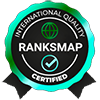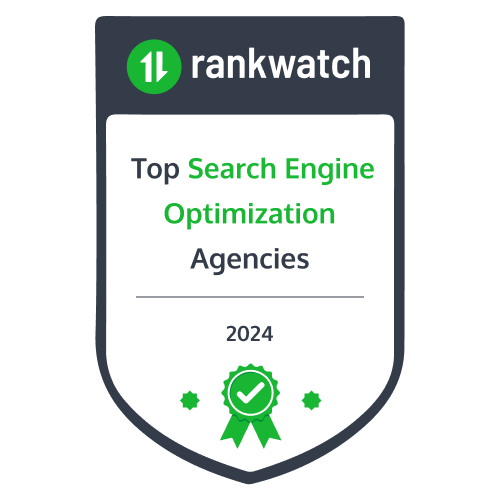Image source: Freepik
Creating content that search engines love is all about knowing what they want and how to help your readers. You start by choosing keywords that fit what people search for. Your headlines need to grab attention. The way you organize your writing should be easy to follow. And don’t skip meta tags—they matter a lot! Want to see how these things work together to get your site noticed? Let’s dig in and find out!
Understanding Search Engine Algorithms
Search engines might seem hard to figure out, but understanding their rules is key to doing well online. You need to keep up with their changes because they tweak things sometimes. Those updates can push your content up or down in the list.
Stuff like good writing and links from other sites helps your ranking. But you also have to think about what people want when they search. Are they buying something or just looking around? Knowing this lets you write content that fits what they need. When search engines see that your stuff matches what people are after, they’re more likely to put it higher up. So, watch for changes and focus on what boosts your rank. It’ll help more folks find your site!
Conducting Thorough Keyword Research
To get good at search rankings, you have to dive into finding the best keywords. Use tools that show you what words people type into search boxes. These tools tell you how often a word gets searched and how tough it is to rank for it.
Check out what words your competitors use too. This shows you where they’re doing well and where you can step in with something different. Also, pay attention to words that get big at certain times, like “summer toys” in June. Knowing these shifts can put you ahead.
Put all this info together to make a strong keyword list. Keep looking at it because search habits change. Updating your research keeps your content fresh and high in the results.
Crafting Compelling Headlines
Writing headlines that catch eyes is a big deal for getting readers interested. A strong headline can decide if someone reads your content or skips it. Here’s how to do it:
- Try Different Kinds: Use questions like “Why does this work?” or lists like “5 Easy Steps.” These pull people in.
- Use Strong Words: Words like “great,” “top,” or “secret” make readers want to click and learn more.
- Hit Their Feelings: Make them curious, happy, or surprised. Feelings get people to pay attention.
Keep your headline short and to the point. Tell readers what they’ll get, like a tip or a fix. Don’t make it confusing or tricky. Try a few ideas to see what your readers like best!
Prioritizing Content Structure and Readability
After you’ve got a solid headline, make sure your writing is easy to read. Here’s how to keep people interested:
- Add Headings: Split your text into parts with titles so readers can find what they want quickly.
- Use Lists: Bullet points or numbers make important stuff stand out and keep things tidy.
- Keep It Clear: Use short sentences and simple words. This makes your content easy for everyone.
A good setup helps readers move through your writing. Tools can check if it’s clear for most people. When your content is simple to follow, people stay longer, and search engines notice that too!
Utilizing Meta Tags and Descriptions
Meta tags and descriptions might seem small, but they do a lot for your site. Start with page titles. Keep them short, around 60 letters, and add your main keyword naturally. This shows search engines what your page is about.
For descriptions, aim for 150 to 160 letters. Write a quick note about what’s on the page. Use words that make people want to click, like “check” or “see.” A good description can bring more visitors. Don’t stuff in too many keywords—just let them fit smoothly. These tags can lift your site higher in search results.
Implementing Effective Internal Linking
Linking pages on your site is a smart way to help your rankings. It shows search engines how your content connects. Use words in your links that say what the next page is about, like “handy tricks” instead of “click here.” This keeps things clear.
Link related pages together in a way that makes sense. It’s like a path for readers to follow. Mix links to big pages and smaller ones too. This spreads value around your site. Check your links often to make sure they work. Broken links bug people and hurt your ranking. Good linking keeps your site strong.
Optimizing Images for SEO
Making your images help search engines is really important. Pick the right file type. JPEGs work well for photos because they’re small and still look good. PNGs are better if your picture needs a clear background.
Keep files small so your site loads fast. Shrink them with tools, but don’t let them get fuzzy. Add alt text to every image. This is a short note that tells search engines and people who can’t see the picture what it shows. Use real descriptions, not just keywords. Name your files smartly too, like “green-forest-lake.jpg” instead of “pic2.jpg.” This helps your site get seen more and keeps visitors happy.
Creating High-Quality, Engaging Content
After fixing your images, work on the main part of your site: the content. Good content keeps people reading longer. Be different and share new ideas—don’t just say what others do.
Ask questions or add polls to get readers joining in. Tell stories that feel real and make people care. Stories can keep them coming back. Use short, easy sentences so everyone understands. Skip big words that might mix folks up. Give your readers something helpful, and they’ll want to visit again.
Leveraging Long-Tail Keywords
Image source: Freepik
When planning your content, use longer keyword phrases. These are specific, like “best red boots for hiking” instead of just “boots.” They don’t get tons of searches, but people using them know what they’re after, so they’re more likely to stay.
These phrases help you reach smaller groups who like your topic. There’s less competition, so you’ve got a better chance to rank high. Find these keywords with tools and add them into your writing naturally. This boosts how many people see your site and matches what they’re looking for.
Monitoring and Analyzing SEO Performance
Checking how your content is doing is a must to win at search rankings. You need to know what works and what doesn’t. Use tools to see how your site stacks up against others. Look at things like how many people click and how fast they leave. This shows you what they enjoy.
Track where your visitors come from and which pages they look at most. This helps you learn about your readers. Don’t use just one tool—try a few to get all the details. Check this info often so you can fix your plans and make them better. Keeping up with this keeps you ready to do even better.
Staying Updated With SEO Trends
To stay great at search rankings, you need to know what’s new. Search engines change their rules a lot, and those updates can move your spot. Look at websites about search stuff often to stay smart.
Test different tools to find the best ones for you. What people like in content changes too—what worked last time might not now. See what big names are doing and try new plans. Join online groups or watch talks to hear from others who do this. Keep learning and trying stuff to stay on top.
Enhancing User Experience for Better Rankings
Want to know how making your site fun helps it rank better? A site that’s smooth and nice to use keeps people around, and that’s good for search engines too. Build it with your readers in mind, thinking about what they want.
Ask them what they think—it’s a great way to get ideas. Use that to make your site better. Make sure everyone can use it, even people who have trouble seeing or hearing. Search engines like sites that work for all. Happy readers mean better rankings!
Conclusion
You’re set to make content that search engines and readers love! Use keywords to guide your writing. Create headlines that get people excited. Organize your words so they’re easy to follow, and add meta tags to help out. Keep watching, fixing, and growing your work. Your rankings will go up. It’s all about smart moves and fun ideas. Keep at it!




